The New Persian Kitchen
This luscious and contemporary take on the alluring cuisine of Iran from cookbook author Louisa Shafia features 75 recipes for both traditional Persian dishes and modern reinterpretations using Middle Eastern ingredients.
In The New Persian Kitchen, acclaimed chef Louisa Shafia explores her Iranian heritage by reimagining classic Persian recipes from a fresh, vegetable-focused perspective. These vibrant recipes demystify Persian ingredients like rose petals, dried limes, tamarind, and sumac, while offering surprising preparations for familiar foods such as beets, carrots, mint, and yogurt for the busy, health-conscious cook. The nearly eighty recipes—such as Turmeric Chicken with Sumac and Lime, Pomegranate Soup, and ice cream sandwiches made with Saffron Frozen Yogurt and Cardamom Pizzelles—range from starters to stews to sweets, and employ streamlined kitchen techniques and smart preparation tips. A luscious, contemporary take on a time-honored cuisine, The New Persian Kitchen makes the exotic and beautiful tradition of seasonal Persian cooking both accessible and inspiring.
Louisa’s latest book, The New Persian Kitchen, is a fresh take on the vibrant cuisine of Iran. Her first cookbook, Lucid Food: Cooking for an Eco-Conscious Life, is a collection of seasonal recipes that was nominated for an IACP award. Louisa has cooked at restaurants in San Francisco and New York, including Millennium, Aquavit, and Pure Food and Wine. She has created original recipes for Whole Living, Food Network Magazine, Prevention, and Better Homes and Gardens. Look for her on the Cooking Channel’s Taste in Translation series, making Persian kebabs. Learn more about Louisa and watch her cooking videos at lucidfood.com.
Louisa Shafia takes some time from her busy schedule to answer some questions about the fascinating world of Persian cuisine.
For those who are unfamiliar with Persian cooking can you tell us about some of it’s unique characteristics?
Iran has two identities. It’s both a Middle Eastern country, and a Central Asian country, and its cuisine reflects both worlds. You’ll find that Persian food has some things in common with Arabic cuisine, such as dates, flatbread, chickpeas, and honey. But Persian food most definitely does not include falafel and hummus. In fact, it has more in common with Indian food, as well as many traits in common with Chinese, and Russian food, due to its proximity to all three. A classic Persian meal includes rice, pickles, yogurt, stew, and a platter of fresh herbs, flatbread, feta cheese, walnuts, and radishes. For dessert, there is usually fresh fruit and nuts, maybe a pastry or two, and delicate glasses of hot, black tea. Because of an ancient system of irrigation which brought melted snow water from Iran’s mountains into its vast desert areas, Iran has always been a land full of fresh fruits, vegetables, and herbs, and you’ll see these ingredients in every dish. Iranians use a huge range of vegetables in their cuisine, and a colorful selection of fruits, including pomegranates, quince, grapes, oranges, limes, persimmons, figs, dates, and sour cherries. Persians love tart flavors, and an ever present sourness gives the food its distinct flavor. Souring agents in Iranian food include pomegranate molasses, sour grape essence, green plums, rhubarb, sumac, sour cherries, dried limes, sour oranges, lemons and limes, and vinegar.
What drew you to Persian cooking in particular?
My dad is from Iran, so I grew up eating Persian food on many occasions. When I decided to pursue cooking as a career, I was really interested in fresh, seasonal cooking. That has always been my compass, and I didn’t intend to do anything particularly related to Iranian food. When I was cooking at my first restaurant job, my chef asked me to come up with a new menu item, and I wanted to come up with something no one had done before. From somewhere came the inspiration to make a Persian dish, a stew made of ground walnuts and pomegranate molasses called fesenjan. The dish was a hit, and my interest in Persian food was piqued. I decided to investigate further, and found a treasure trove of flavors and ingredients that I wanted to dive into.
You’ve mention that you have found inspiration from the Silk Road. How so?
Well, Iran is located on the ancient system of trade routes known as the Silk Road, and is positioned midway between Europe and Asia. It follows that the food of Iran holds the influences of its surroundings, and is a living document of the transmigration of people and ideas along these trade routes. I was simply researching food, but there are wider historical patterns that are revealed through food, and I came to understand in real way how all of the cultures and regions who had anything to do with the Silk Road have been exchanging ideas for thousands of years. In other words, Europe, The Middle East, Asia, and Africa, have been in close contact since ancient times. That realization was huge for me. You see evidence of it in Iranian food with ingredients like noodles and rice from Asia, tamarind from Africa, ginger from India, and even mayonnaise from Russia and France.
Can you tell us a little about lucidfood.com?
Lucid Food is a place for me to put all my goings-on and factoids in one spot. You can watch my cooking videos, get a bunch of my recipes, and find out what you can hire me to do! It’s also a resource for people who are new to Persian cooking, so I have a list of stores around the country where people can buy Persian ingredients.
What are you working on now?
Happily, the book is getting a lot of attention, so at the moment I’ve got my hands full with interviews and book release events. I have a feeling my next project will take me to the cuisine of a nearby part of the world.
Photo by Sara Remington.
Every once in a while I pick up a cookbook and want to cook everything in it, which was the case with this one.
—Martha Rose Shulman, The New York Times
“Louisa does a beautiful job of weaving the traditional Persian culinary palette into something of her own. She takes fantastical ingredients—rose water, pomegranates, sumac, and saffron—and spins them into an inspired and unique collection of recipes that are fresh, bright, and brilliantly full of flavor.”
—Heidi Swanson, author of Super Natural Every Day
“This is a highly evocative book telling the story of the marvelous cuisine of Iran, one of my favorites and one that has yet to be properly discovered in the West.”
—Yotam Ottolenghi, coauthor of Jerusalem
“The New Persian Kitchen is the perfect introduction to Persian cooking, full of classic ingredients and not-so-traditional ones, like tofu and quinoa. This book has something for everyone: practical recipes, anecdotes about the culture and history of Iran, and beautiful photography.”
—Firoozeh Dumas, author of Funny in Farsi
Vinegar Carrots with Toasted Sesame Seeds
Fresh Herb Platter (Sabzi Khordan)
Turmeric Chicken with Sumac and Lime
Vinegar Carrots with Toasted Sesame Seeds
serves 4
1/2 cup sesame seeds (white or black)
1 clove garlic, minced
2 tablespoons white vinegar
2 tablespoons rice vinegar
1 tablespoon honey
1 tablespoon toasted sesame oil
1 teaspoon red pepper flakes
Sea salt
11/2 pounds carrots, cut lenthwise into thin ribbons
1 cup tightly packed fresh cilantro
Heat a small skillet over medium-high heat. When hot, add the sesame seeds and alternate between shaking the pan and stirring the seeds. When the seeds start to pop, after a couple of minutes, transfer them to a plate and let cool to room temperature.
In a small bowl, whisk together the garlic, vinegars, honey, sesame oil, red pepper flakes, sesame seeds, and 1 teaspoon salt. Pour the dressing over the carrots, add the cilantro, and toss well. Season to taste with salt and serve.
Fresh Herb Platter (Sabzi Khordan)
serves 4 to 6
8 ounces feta cheese
1 tablespoon coriander seeds
1 tablespoon cumin seeds
1 tablespoon caraway seeds
1/3 cup extra-virgin olive oil
Coarse salt, such as Maldon salt, fleur de sel, or kosher salt
2 bunches whole fresh herbs, in any combination: spearmint, basil, cilantro, flat-leaf parsley, tarragon, dill, chives, marjoram
1 bunch scallions, quartered crosswise, roots removed
2 cups walnuts (see Note below)
6 radishes, trimmed and quartered
Lavash or other flatbread
Drain the feta and place it in a medium bowl. Grind the spices coarsely, if desired. Heat a small skillet over high heat. Add the coriander, cumin, and caraway seeds, and shake the pan continuously until the spices start to release their aroma, about 2 minutes. Immediately transfer to a bowl and pour in the olive oil. Add a pinch of coarse salt. Swirl the spices in the oil and steep for a few minutes. Pour the mixture over the feta. You can even work it in with your hands, gently crumbling the feta, if desired.
Wash and dry the herbs. Trim the stems, but leave them intact. Place the herbs on a large platter in a few fluffy piles. Place the walnuts on the platter, along with the radishes and lavash. Transfer the feta to the platter and garnish it with coarse salt.
For a single serving, pick up a few stalks of herbs. Tear the flatbread into a manageable piece and stuff it with the herbs, walnuts, a small piece of cheese, and a radish or two. Fold and eat like a sandwich.
Note: To remove bitterness from the walnuts, place them in a bowl, add boiling water to cover and a pinch of salt, and soak from 1 hour up to overnight. Before serving, drain and rinse until the water runs clear.
Turmeric Chicken with Sumac and Lime
serves 4
1 teaspoon ground turmeric
Sea salt and freshly ground black pepper
4 bone-in chicken thighs
2 tablespoons grapeseed oil
3/4 cup water
4 cloves garlic, minced
2 juicy limes, halved
Sumac, for garnish
In a small bowl, mix the turmeric with 1 tablespoon salt and 2 teaspoons pepper. Place the chicken on a rimmed baking sheet and sprinkle with the spice mixture, turning to coat both sides.
Heat a large skillet over medium-high heat and add the oil. Brown the chicken well on both sides, about 7 minutes per side. Pour in the water, then add the garlic, stirring it into the water. Bring the water to a boil, then turn down the heat to low and cover. Braise the chicken for 25 minutes, until the inside is opaque. Transfer the chicken to a serving platter, turn up the heat to high, and reduce the cooking liquid for a few minutes, stirring occasionally until it’s slightly thickened. Season to taste with salt and pepper, and pour the sauce over the chicken.
Dust the chicken with sumac and pepper, garnish with lime halves, and serve.
Vegetarian Option
Use whole portobello mushrooms in place of the chicken, or use 1 pound firm tofu, well drained and cut into slabs 1 inch thick. You will need a little extra oil for searing than what is called for in the recipe.
Reprinted with permission from The New Persian Kitchen by Louisa Shafia, copyright © 2013. Published by Ten Speed Press, a division of Random House, Inc.
Food Photography credit: Sara Remington © 2013


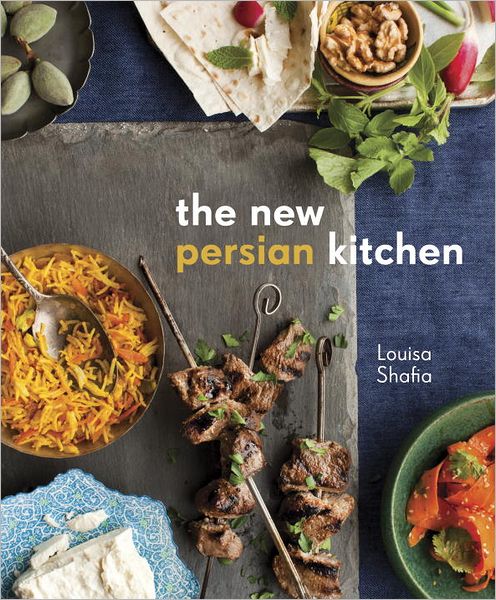







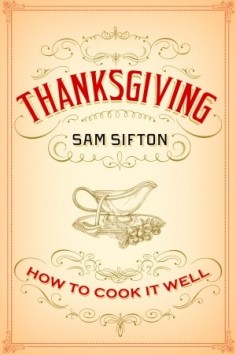
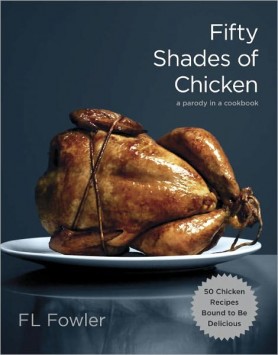
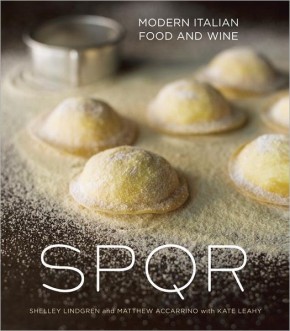
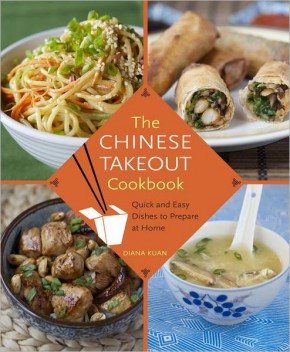
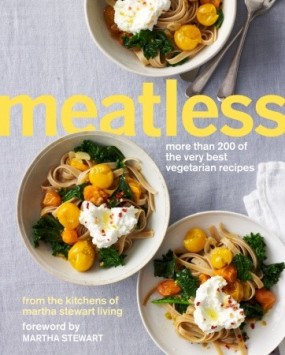
Leave a Reply